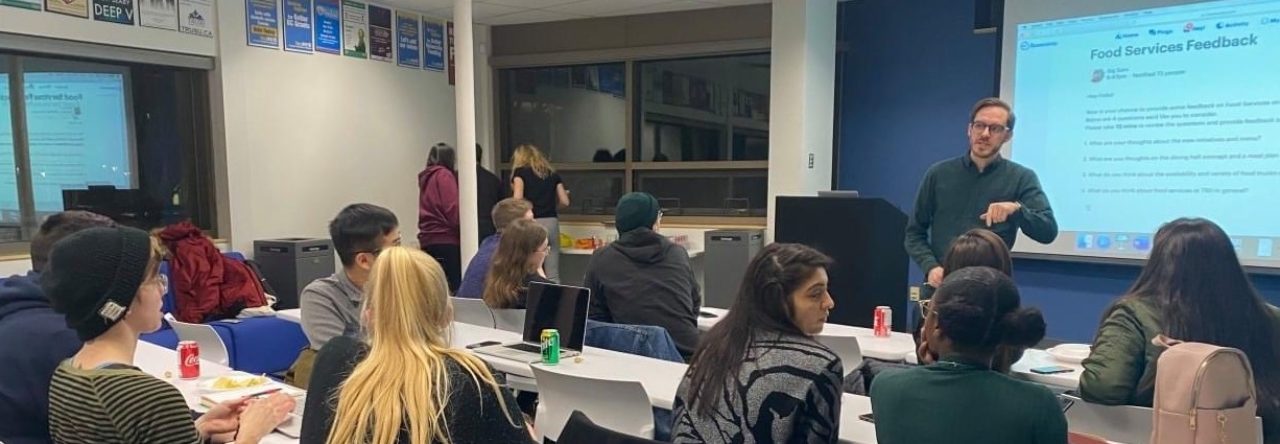I observed a video of a lesson in an intermediate class in China. The class consisted of approximately fifteen adult students who appeared to be taking the class for business or personal purposes. The focus of the lesson was speaking and listening based on the topic of seeking and giving advice.
This lesson provided a great example of using simple, consistent, and relevant content. Most of the class was centred around the teacher having a cold and seeking advice. He also solicited student topics for giving and getting advice and added the topic of their own English learning. In this way, the content required little preparation but was relevant and interesting to the students.
From this limited content the teacher maximized instruction and practice through constructive activity sequencing and multiple facilitation techniques. For example, regarding his cold, he began by simply soliciting and recording advice, followed by presenting a photo of himself coughing in a social setting for discussion, and followed further by a video of the same situation and advice he received. In each activity, he employed teacher-talk and direction, individual work, pair work, full-class interactions, and class presentation with error correction. Further, each activity built upon the last. Finally, the teacher concluded the class by returning to the first activity and had the students correct their own advice with what they had learned in the lesson. I was very impressed with this level of organization and hope to design lessons with the same level of integration.
The lesson also demonstrated ways in which a limited number of activities on one topic can facilitate teaching on a range of skills including vocabulary and word choice, pronunciation, and speaking fluency and communicative ability. Because the activities were so well-integrated on the same content, the teacher had the time and attention to pause activities to address a specific skill. For example, I appreciated how he identified an issue of pronunciation in word combinations – i.e. “don’t you” or “just try” – where the last sound of the first word may drop away for fluency. While this wasn’t directly connected to the activity, it was clear the teacher had identified this as a skill to build incidentally and did so seamlessly.
Finally, the lesson employed effective techniques for assessment and error correction that engaged the class. An early example was allowing/encouraging students to finish his sentences while he gave directions or described activities so they could show understanding. However, the technique I most want to incorporate in my teaching was listening to students during their interactive practice, writing samples on the board, and then having the class review and correct them together. This made error correction directly relevant to the class performance but made it collective and constructive rather than individual. When the teacher did provide individual error correction it was either framed positively, “That’s not a wrong word, but this would be better…” or framed as a question, “Was that what they said? I thought it was…”
The challenges in this class included that the teacher (at least as shown in the video) did not provide either a lesson overview or objective to the students. They may have benefited from having expectations prior to the activities. Further, in one case, the teacher’s focus on multiple facilitation techniques seemed more a habit than a useful approach. For example, the teacher had students discuss in pairs how they had performed in a previous interactive activity and I don’t think it had a constructive purpose. This demonstrated why activity design should be critically examined and intentional.
Overall, I thought this lesson was very effective. The main takeaway for me is the idea of keeping the content simple and relevant and not overcomplicating the activities so that the focus can be solidly on building student skills through extensive, repeated, and varied practice with incremental additions.


Leave a Reply